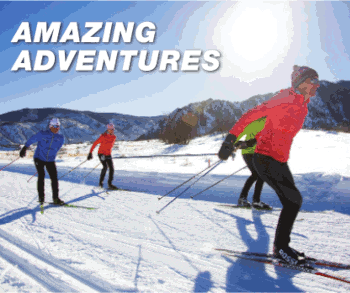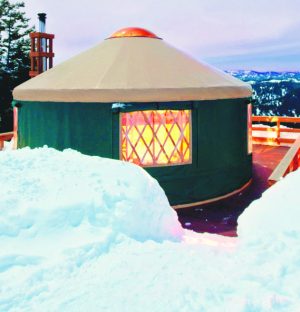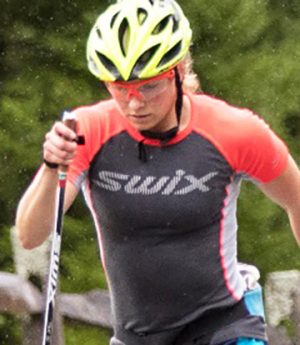July 21, 2009 – Last week our national ski community leaned on each other struggling to make sense of the tragic rollerski accident in Northern Maine. It was a major hit to those close to the Neal family, Jackson Hole Ski Club, Sun Valley, Intermountain Region, Maine Winter Sports Center, Middlebury, US Biathlon, and the sport as a whole.
It was a very real and scary (thing) for all of us. Around the country we continue to train, but with a new sense of respect for how fragile life is, and how dangerous it can be when we put cars and trucks together on the same roads with people walking their dogs, jogging, cycling or rollerskiing – especially when so many drivers are distracted by cell phones and other activities.
The bottom line is; rollerskiing is not safe. I know, I’m a ski coach, and not innocent either. I have scary close calls too often, and once helped promote a ski product through a poster of a helmetless athlete (wow did I get some s!#*?! mail for that!). But rollerskiing on roads is our reality and we have to make it as safe. What can we do to minimize the danger when sharing the roads with cars?
Time
Rush hour, not good.
Avoid dawn, dusk. We try to beat summer heat by training at dawn or dusk, or maximize time in between workouts but keep in mind that too early, or too late could mean bad visibililty.
Consider the weather. Is it safer to do this workout tomorrow when it’s not bad visibility? Is it worth it? Can I adjust my schedule?
Location
Does the road have a good shoulder?
Good pavement
Hills and corners with bad visibility?
Poorly located stop sign or lights, merging?
Gear
Bright clothing is a must.
Helmet is a must.
Drink, food, cell phone, etc.
Group
Group or no group? Probably safer for visibility to roll with others, but not if it distracts you from the road.
Minimize distracting chatter.
Roll single file. Pass quick. Save the side by side for bike path.
Alert your buddies to traffic (“car back”), and rough road.
Effort
I know how hard an athlete can go in intervals and time trial. Not much left brain power left when pushing hard and trying to nail technique. Pick the site specific to workout, NOT just based on terrain, loop, pavement, but also on safety.
Mindset
Especially when alone with 100% focus on technique, or effort…especially in a group setting… We focus on everything but the cars
and this needs to change. Pay attention to what you are doing to become a better skier, but keep an eye on the road as well.
Behaviour
Ski single file.
Don’t induce road rage, Be Courteous.
Skiing in direction of traffic is probably best.
Follow traffic laws. Here is a link to articles on bicycle laws, and safety.
– In some cases we might ask ourselves if rollerskiing on the roads is worth it? Although
– If you aren’t fortunate enough to live near a rollerski path, or bike path, then yes it is worth it to rollerski on the roads. We need it for our sport. Do what you can to promote safety and awareness. Remember to:
– Always always consider safety
– Always always ski single file
– Always always wear safety vest or flourescent shirt
– Always always wear a helmet
– And always always ALWAYS remember Willie Neal.
Here are some thoughts from some of my colleagues – thanks for reading;
“I am concerned about promoting only rollerskiing on roads with shoulders (a lot of the roads in rural Maine, and I suspect most rural communities, don’t have shoulders, but do have relatively little traffic), and bike lanes (my experience is that these roads tend to have higher speed limits, more traffic, and in Willie’s case, and the case of other accidents where distracted drivers are involved, or even drunk drivers, the extra 4-6 feet of pavement would not necessarily make you any safer). I think the key is identifying roads that have little traffic, that afford drivers clear visibility of us (is not too twisty with sharp turns, have skiers wear reflective apparel and blinking LED lights on helmets or poles, stay in single file, not use anything that affects our ability to be totally aware of our surroundings like ipods, not ski in low light, or directly into or out of the sun. These are not only important for rollerskiers, but walkers, cyclists, etc and are essentially what we have been telling our skiers all along.”
“I also think it is important not to paint roller skiing as more or less dangerous than other forms of non-motorized transportation on the roads. The statistics would certainly appear to support the fact that it is relatively safe, but that said, we should all, always, be looking for ways to make everything our athletes do safer.”
“I think the key is continuing to look for those things, while at the same time advocating for more awareness around sharing the roads. Road signs that remind people that there are aspiring Olympians on their roads and please help keep them safe, would be a good start. Free TV and radio spots with the same message would be very helpful as well. Also, having police remind people that sharing the roads is not only the neighborly thing to do, but also the law, would go a long way.”
“FYI – I just ordered bright shirts for our team. But of course more important: first be vigilant, two wear a helmet, three pick and know your route, and ski defensively.”
“Same for Bjorn Daehlie gear, they will be shipping to the US in January, but orders need to be done by Sept 1. … I will have a catalog for them shortly and I will be looking to arrange a program which may include our logo on some bright BD shirts.”
“Brooks makes excellent shirts. We’ve ordered two for every athlete on our team. They are not cheap, nor is life, and next year is too late. Maybe the main source of where these shirts come from can wait until Bean or BJ are ready, but for now the Brooks makes a great option for athletes and coaches on our teams. Craft, too.”
Brooks product here and here.
“We are going to use this tragedy to do better for all of our skiers and insist on an approach to rollerskiing that addresses the points you outlined.”
“The board and myself have also been thinking of last week’s tragedy and — to (previous) point — have been trying to find a way to do better for our skiers and other athletes. Working with some of the coaches/board members on NENSA, we’ve spec’d out a more “skier friendly” vest. It’ll be high-viz mesh, with a very cool, very light watch battery driven light that either blinks or flashes. It runs the entire length of the torso. The vest will also have an emergency contact patch and a small phone/goo pocket. Again, it’ll be sold at cost and we’re targeting to get something under $20. L.L.Bean has designed a more complicated vest in the past, but our belief is that this should be a “absolutely no excuse” priced product for an athlete. Probably none of this would’ve made a difference in last week’s event. But it’s a step forward and I’d be awfully happy to see a few more kids rollerskiing past my house or on Faster Skier or on Team Today wearing reflective gear.”
“When we entered into the Eastern REG camp last week it was certainly on a somber note. But, if anything good can come out of something like this, at the very least it has increased safety awareness tremendously and reminded us not to take anything for granted. I was impressed at how diligent the skiers were out on the roads – by far the best “behaved” group of skiers I have ever witnessed at a camp and while we all recognize that some accidents are unavoidable, we can at least take charge of the things we can control.
I believe that we as coaches, also need to continue educating our athletes and other coaches but also the community. In addition to mandating HiVIs clothing and helmets, etc, road etiquette must be taught, reinforced and adhered to. I was pleasantly surprised today at our first session with the local HS kids, how open they are to hearing about safety and ways to improve their odds. Good road etiquette can go a long way towards creating a better feeling on the motorists part as well.”
“One thing that is also being done in town, is local community education by doing outreach and taking the initiative. When we know there will be groups training out on the roads (a frequent occurrence near the OTC), an itinerary of sorts will be posted to the community and to the state police, alerting them so they know to expect us out there. This was a big turnaround from some less pleasant experiences we had in the past and it is likely to make everyone’s experience a more positive one.”
“Also important; don’t congregate in the road in a group, eve. Be award when cresting rises that cars cannot see you.”
Top News Stories
Rollerski Safety is a Must
by Eli Brown/Director of Skiing University of UtahLeave a Reply
You must be logged in to post a comment.






![National camp action [P]...](https://skitrax.com/wp-content/uploads/2019/08/Duluth-4-2019-08-08-at-10.46.51-AM-300x246.png)
![Matt Liebsch on the CXC Elite Team [P] CXC...](https://skitrax.com/wp-content/uploads/2019/08/Matt-Liebsch-CXC.2-525x700.4-300x267.jpg)
![Dan LaBlanc [P]...](https://skitrax.com/wp-content/uploads/2019/08/Dan-LaBlanc-img_1855.3.jpg)

![Put safety and protection at the top of your rollerski priority list.[P]ADK](http://skitrax.com/skitrax22/images/skitrax/4a65fe573345dAdk rollerski.jpg)
![Reflective clothing is key...[P]ADK](http://skitrax.com/skitrax22/images/skitrax/4a65fe415a55eRollerski 02 2.jpg)